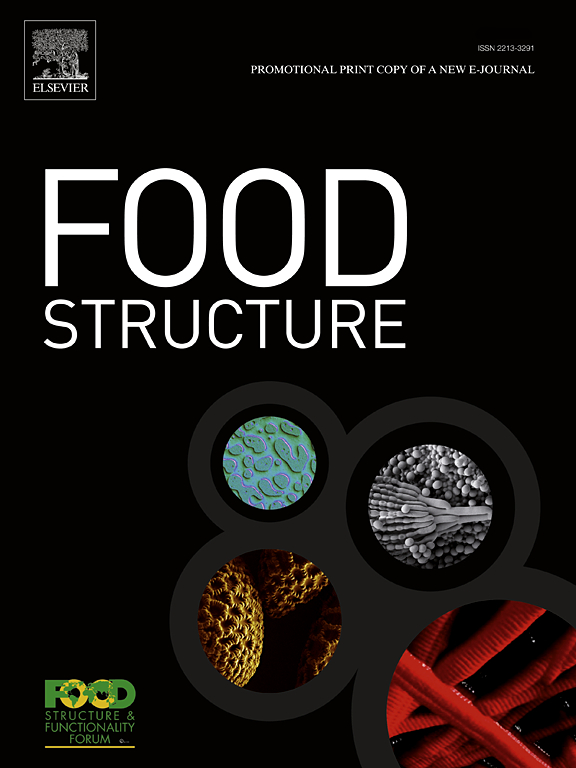Protein/lipid ratio influence on microstructure and physicochemical properties of dulce de leche enriched with maltodextrin and inulin
IF 5.9
3区 农林科学
Q1 FOOD SCIENCE & TECHNOLOGY
引用次数: 0
Abstract
This work explored the structural arrangement of inulin and maltodextrin within the protein-lipid matrix of functional and healthier dulce de leche (DL) compositions and their influence on the physicochemical properties. Two basic formulations of dulce de leche with low and high protein/lipid ratios were produced. They were added with inulin, maltodextrin, or their mixture in equal proportion. This study provides novel structural images of dulce de leche obtained through confocal laser scanning microscopy. Inulin alone or combined with maltodextrin formed residual inulin-crystal aggregates, occupying a considerable volume in high protein/lipid ratio DL formulations. In contrast, it appeared as dispersed particles and better integrated into the structure of low protein/lipid ratio DL formulations. The presence of inulin decreased the elastic (G’) and viscous (G”) moduli and the consistency index (k) of both regular and low-fat formulations. Still, its effect on the mechanical properties depended on the protein/lipid ratio. Fat reduction increased n’ (rate of change of G’ with frequency), and decreased values of k, all texture parameters, and all colour parameters.
蛋白脂比对添加麦芽糖糊精和菊粉的乳清糖的微观结构和理化性质的影响
本研究探讨了菊粉和麦芽糖糊精在蛋白-脂质基质中的结构排列及其对功能健康的牛奶焦(DL)组合物理化性质的影响。生产了蛋白脂比低和高两种基本配方的牛奶焦糖。将其与菊粉、麦芽糖糊精或其混合物按等比例添加。本研究提供了通过激光共聚焦扫描显微镜获得的新型乳清糖的结构图像。菊粉单独或与麦芽糖糊精结合形成残留的菊粉晶体聚集体,在高蛋白/脂比DL配方中占有相当大的体积。相反,它表现为分散的颗粒,并且更好地融入低蛋白/脂比DL配方的结构中。菊粉的存在降低了常规配方和低脂配方的弹性(G′)和粘性(G′)模量和稠度指数(k)。然而,其对机械性能的影响取决于蛋白/脂质比。脂肪的减少增加了n′(G′随频率的变化率),降低了k、所有纹理参数和所有颜色参数的值。
本文章由计算机程序翻译,如有差异,请以英文原文为准。
求助全文
约1分钟内获得全文
求助全文
来源期刊

Food Structure-Netherlands
Chemical Engineering-Bioengineering
CiteScore
7.20
自引率
0.00%
发文量
48
期刊介绍:
Food Structure is the premier international forum devoted to the publication of high-quality original research on food structure. The focus of this journal is on food structure in the context of its relationship with molecular composition, processing and macroscopic properties (e.g., shelf stability, sensory properties, etc.). Manuscripts that only report qualitative findings and micrographs and that lack sound hypothesis-driven, quantitative structure-function research are not accepted. Significance of the research findings for the food science community and/or industry must also be highlighted.
 求助内容:
求助内容: 应助结果提醒方式:
应助结果提醒方式:


